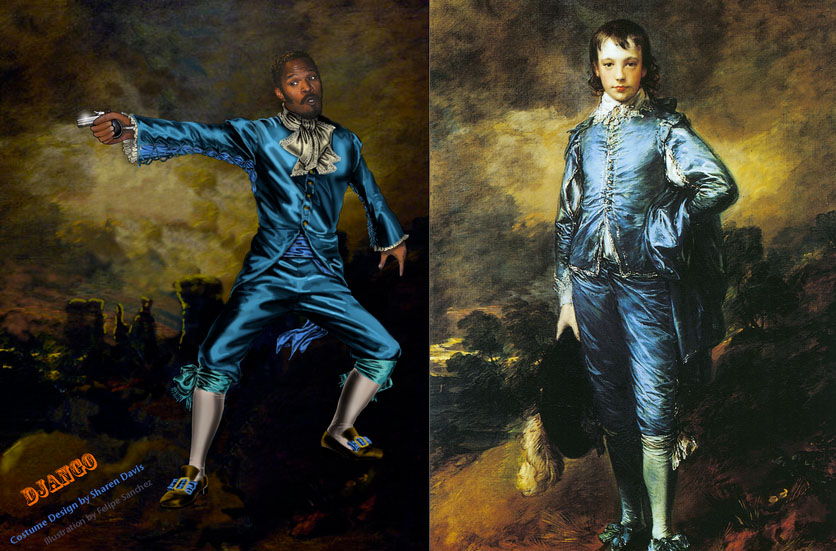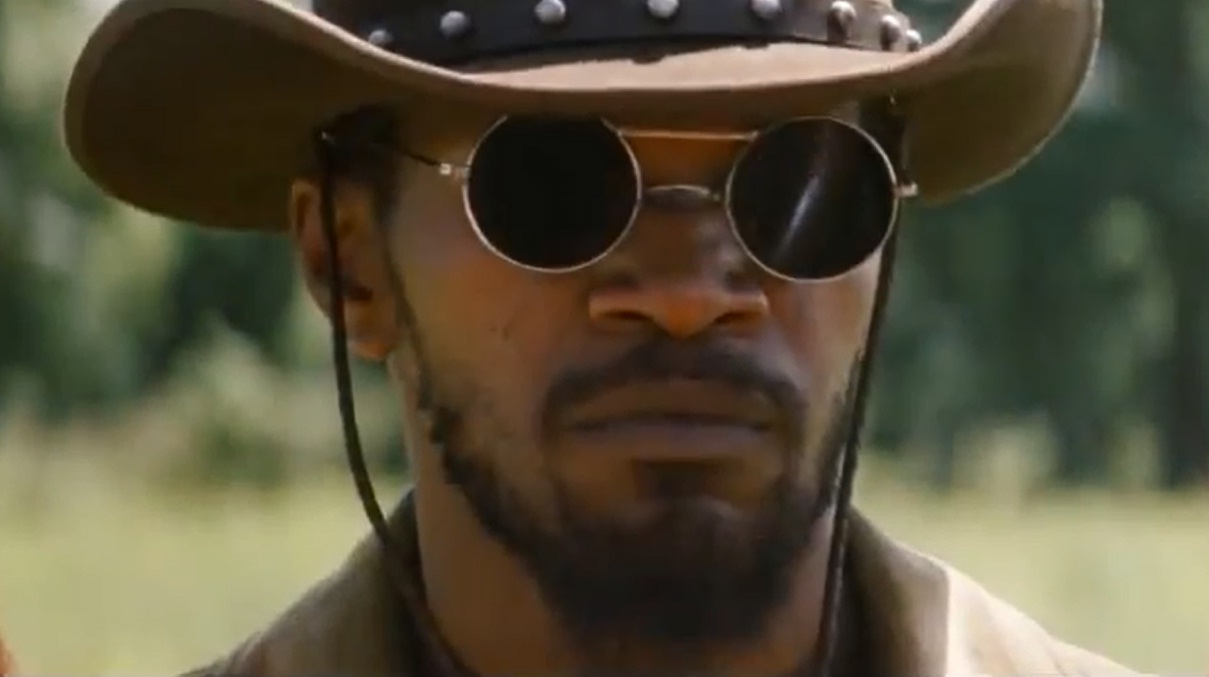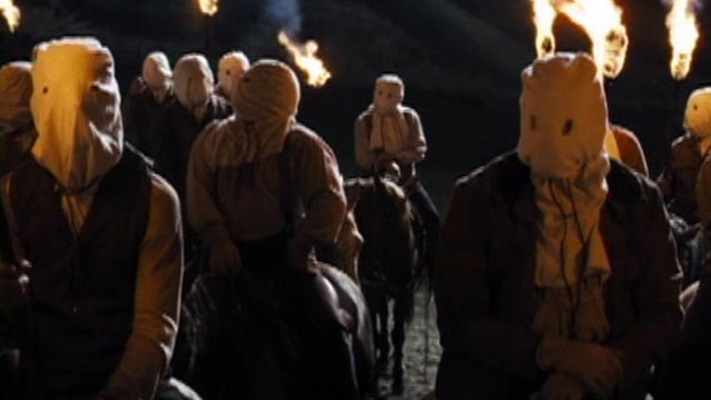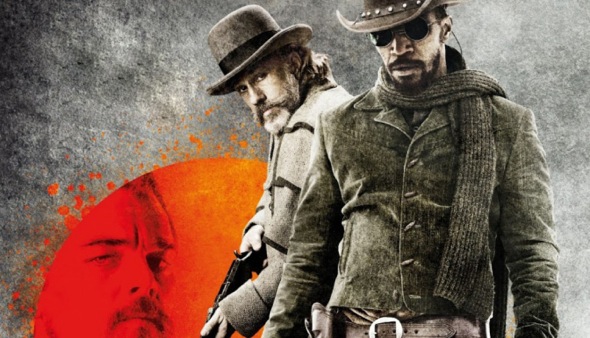
Image Credit: Vanity Fair
Although it’s been two months since its initial release, the internet is still abuzz with social critique of Tarantino’s newest film Django Unchained. Roxane Gay, a staff writer for Buzzfeed, argues that rather than encouraging a national discourse on slavery, slavery is instead “the movie’s easily exploited backdrop.” The movie functions instead as “a white man’s slavery revenge fantasy, and one in which white people figure heavily and where black people are, largely, incidental.” Finally, she concludes, “Django Unchained isn’t about a black man reclaiming his freedom. It’s about a white man working through his own racial demons and white guilt.”
Many of Django’s critics couch their arguments in similar terms—that is, that while Tarantino claims to reignite a discourse on slavery in Django Unchained, he in fact privileges genre over content in a way that dangerously decontextualizes our most central national trauma. I have argued in an early post that privileging medium over content can function as a form of censorship. Here, I want to discuss how the same aesthetice practice can simultaneously suggest and defer engagement with tragedy and trauma.
When Django Unchained was in the drafting stage, Tarantino hinted at his new project to The Telegraph’s John Hiscock:
"I want to explore something that really hasn't been done. I want to do movies that deal with America's horrible past with slavery and stuff but do them like spaghetti westerns, not like big issue movies. I want to do them like they're genre films, but they deal with everything that America has never dealt with because it's ashamed of it…But I can deal with it all right, and I'm the guy to do it."
In trying to find a way to engage with Tarantino’s claims—his claims to authority, his privileging of genre--I found DD’s argument on WhitesEducatingWhites the most provocative. In his article entitled "Whiteness Unchained: When A National Shame Becomes Camp," the author argues that although “[the] movie supposedly centered around a slave turned bounty hunter in pursuit of revenge,” it “stars white people with Black people in supporting roles.” Although DD never unpacks his claim that Django Unchained is campy, it struck me that reading Django Unchained as camp is key to deconstructing some of its problematic relationships to slavery, race, violence, and history. I refer here to Sontag’s seminal essay “Notes on Camp” for some basic definitions of the form and its mechanisms.
First, “the essence of Camp is its love of the unnatural: of artifice and exaggeration.” Camp depends on hyperbole and in always privileging form above content. Second, camp requires rhetorical distance: “Things are campy, not when they become old - but when we become less involved in them, and can enjoy, instead of be frustrated by, the failure of the attempt.” Third, camp is a comedic form, it “proposes a comic vision of the world. But not a bitter or polemical comedy.” Following this, it requires aesthetic engagement in the act of detachment: “If tragedy is an experience of hyperinvolvement, comedy is an experience of underinvolvement, of detachment.” The aesthetic experience in camp is formed with a sensual engagement with the artifice—the genre, the medium, the act of mediation—itself, rather than, as in tragic forms, the content of that artifice. And, as Sontag notes, “Detachment is the prerogative of an elite.” Finally, its “essential element is seriousness.” Camp is earnest, even when that seriousness fails. Camp cannot be ironic.

Image Credit: Chief Crew
“Campifying” violence and tragedy becomes especially problematic because earnestness is the defining element of camp. There is no room for irony, critique, or satire in camp as a discourse; rather, respect for the artifice or mediation itself is the militant narrative force. If, as Northrup Frye argues, irony is the central discourse of satire, then sincerity has the same function for camp. The moment campiness attempts irony, it becomes satiric. This is why a movie like The Producers draws on elements of camp but is not campy itself—it instead implements elements of irony to levy critique against the “producers” of Broadway performances specifically by way of aestheticizing the public’s near-universal disdain for the atrocities committed by Nazi Germany. The moment The Producers ridicules Nazism through camp, it becomes satire.
For Tarantino to claim the rhetorical distance that irony provides in addressing the national shame of slavery would be problematic from the onset, but in privileging genre over content, he extinguishes even this possibility. Instead, the film functions to aesthetize a violence so terrible that, as Tarantino notes, we as a nation struggle to “deal with,” especially in filmic depictions. By doing so, he creates rhetorical distance from the content itself. He does not campify the experience of slavery so much as he avoids its portrayal, which exists little outside of highly-mediated (i.e. highly aestheticized) depictions of violence. It is the “campification” of this violence that is so dangerous, because it encourages the reader to indulge in the violent fantasy from all angles—that of the slaver, that of the slave—without interrogating it. In operating on the assumption that slavery is universally rejected by the contemporary American audience, Tarantino defers engaging with violence in an immediate sense. Rather, he hypermediates and hyperaestheticizes violence at the cost of content—and in the case of Django Unchained, that content is any substantial character development for the people of color within the film, as well as any depiction of the actual practice of slavery.

Image Credit: Wondersinthedark
What we receive instead is proto-Klansmen who are humanized through the demotic language that distracts from the intent to commit unspeakable violence. We see women slaves sauntering the plantation grounds or dining aside their masters in the garb of the aristocracy. And we see Django himself executing his first act of revenge in emasculating, Fauntleroy garb. (Sharen Davis, the film's costume designer, designed the valet "uniform" after Gainsborough's "The Blue Boy".) The lives of slaves themselves are mythologized—most explicitly, Django and Broomhilda as Siegfried and Brünnhilde in the Nibelungenlied—while the white characters are humanized, individualized, and given complex characteristics. Because of this dynamic, King Schulz leads the film, acting as its primary agent.

Image Source: Think Progress
Finally, I would like to suggest that the film’s Academy Award nominations serve as further evidence for the dangers of camp and Hollywood’s complicitness in this sort of problematic and incomplete engagement with slavery. The film was nominated for a total of five Academy Awards: Best Cinematography, Best Screenplay, Best Picture, Best Sound Editing, and Best Supporting Actor. Best Screenplay and Best Picture are all accolades that belong primarily to Tarantino himself and show the Academy’s admiration for Tarantino’s vision, and Best Cinematography and Best Sound Editing rely heavily on the film’s engagement with the genre of the Spaghetti Western. All of these nominations demonstrate the Academy’s deep respect for the bare-bones aesthetic of the film itself. But Christoph Waltz’ nomination and win for Best Supporting Actor implies complicitness even with the false premise (of engagement with national trauma, of engagement with slavery) of the film itself. Although Christoph Waltz has the most lines, the most screen time, and the most character development—criteria that in virtually any other film would qualify him as the “lead”—his nomination for Supporting Actor is necessary to support the films’ other Academy-nominated accolades. We must believe that Waltz supports Jamie Foxx as lead to believe in the film. But this is one final fantasy that collapses under scrutiny.




Recent comments
2 years 29 weeks ago
2 years 44 weeks ago
2 years 44 weeks ago
2 years 50 weeks ago
3 years 4 weeks ago
3 years 4 weeks ago
3 years 4 weeks ago
3 years 6 weeks ago
3 years 6 weeks ago
3 years 6 weeks ago